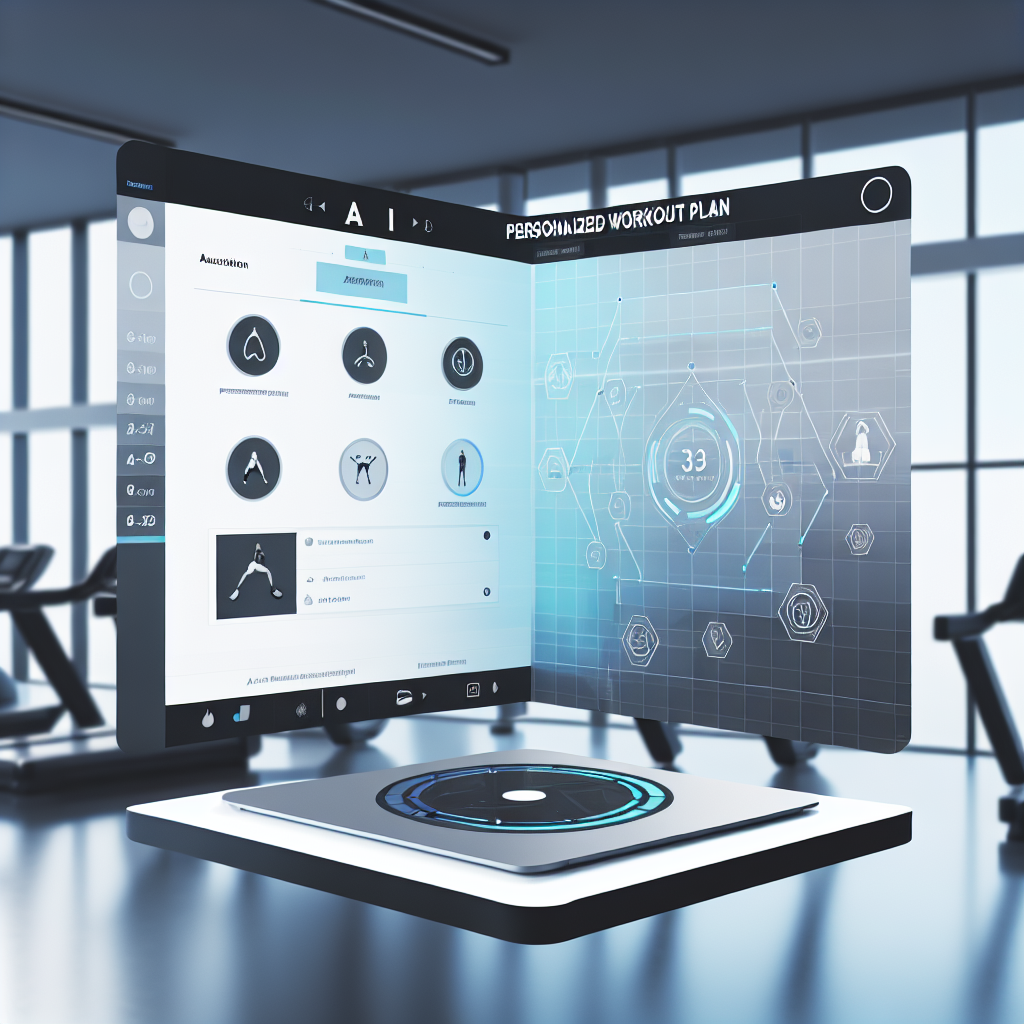-
- AI-Driven Personalized Workout Plans
- Understanding AI-Driven Personalized Workout Plans
- Configuration Steps for Creating AI-Driven Workout Plans
- Step 1: Data Collection
- Step 2: Data Analysis
- Step 3: Plan Generation
- Step 4: Implementation and Feedback
- Practical Examples of AI-Driven Workout Plans
- Best Practices for Implementing AI-Driven Workout Plans
- Case Studies and Statistics
- Conclusion
AI-Driven Personalized Workout Plans

In today’s fast-paced world, fitness enthusiasts and casual gym-goers alike are seeking efficient and effective ways to achieve their health goals. Traditional workout plans often fail to consider individual differences in fitness levels, preferences, and goals. This is where AI-driven personalized workout plans come into play, leveraging data and algorithms to create tailored fitness regimens that adapt to users’ needs. This guide will explore the importance of AI in fitness, provide actionable steps to create personalized workout plans, and highlight best practices and real-world examples.
Understanding AI-Driven Personalized Workout Plans
AI-driven personalized workout plans utilize machine learning algorithms to analyze user data, including fitness levels, goals, and preferences. By processing this information, AI can generate customized workout routines that evolve over time, ensuring users remain engaged and challenged. This approach not only enhances user experience but also improves workout effectiveness, leading to better results.
Configuration Steps for Creating AI-Driven Workout Plans
To implement an AI-driven personalized workout plan, follow these actionable steps:
Step 1: Data Collection
- Gather user data through questionnaires or fitness apps.
- Include metrics such as age, weight, height, fitness goals, and exercise preferences.
- Utilize wearable devices to track real-time data like heart rate and activity levels.
Step 2: Data Analysis
- Use machine learning algorithms to analyze the collected data.
- Identify patterns and correlations that can inform workout recommendations.
- Consider using libraries like TensorFlow or PyTorch for model development.
Step 3: Plan Generation
- Create a dynamic workout plan based on the analyzed data.
- Incorporate various exercise types (strength, cardio, flexibility) tailored to user preferences.
- Ensure the plan includes progression metrics to track improvements over time.
Step 4: Implementation and Feedback
- Deploy the personalized workout plan through a user-friendly interface.
- Encourage users to provide feedback on their workouts for continuous improvement.
- Utilize this feedback to refine algorithms and enhance future recommendations.
Practical Examples of AI-Driven Workout Plans
Several companies have successfully implemented AI-driven personalized workout plans:
- Freeletics: This app uses AI to create personalized training plans based on user input and performance data, adapting workouts as users progress.
- Fitbod: Fitbod analyzes user data and available gym equipment to generate tailored strength training workouts, ensuring optimal muscle recovery and growth.
- Peloton: Peloton’s AI algorithms recommend classes based on user preferences and past performance, creating a more engaging fitness experience.
Best Practices for Implementing AI-Driven Workout Plans
To maximize the effectiveness of AI-driven workout plans, consider the following best practices:
- Ensure data privacy and security by implementing robust encryption methods.
- Regularly update algorithms to incorporate the latest fitness research and trends.
- Provide users with educational resources to help them understand their personalized plans.
- Encourage community engagement through social features, allowing users to share progress and motivate each other.
Case Studies and Statistics
Research indicates that personalized workout plans can significantly enhance user engagement and results. A study published in the Journal of Sports Sciences found that individuals using personalized training programs experienced a 30% increase in workout adherence compared to those following generic plans. Additionally, companies like Freeletics report that users who engage with their AI-driven plans see a 25% improvement in fitness levels within three months.
Conclusion
AI-driven personalized workout plans represent a revolutionary approach to fitness, offering tailored solutions that adapt to individual needs and preferences. By following the outlined configuration steps, leveraging practical examples, and adhering to best practices, fitness professionals and enthusiasts can create effective and engaging workout experiences. As the fitness landscape continues to evolve, embracing AI technology will be crucial for achieving optimal results and maintaining user motivation.